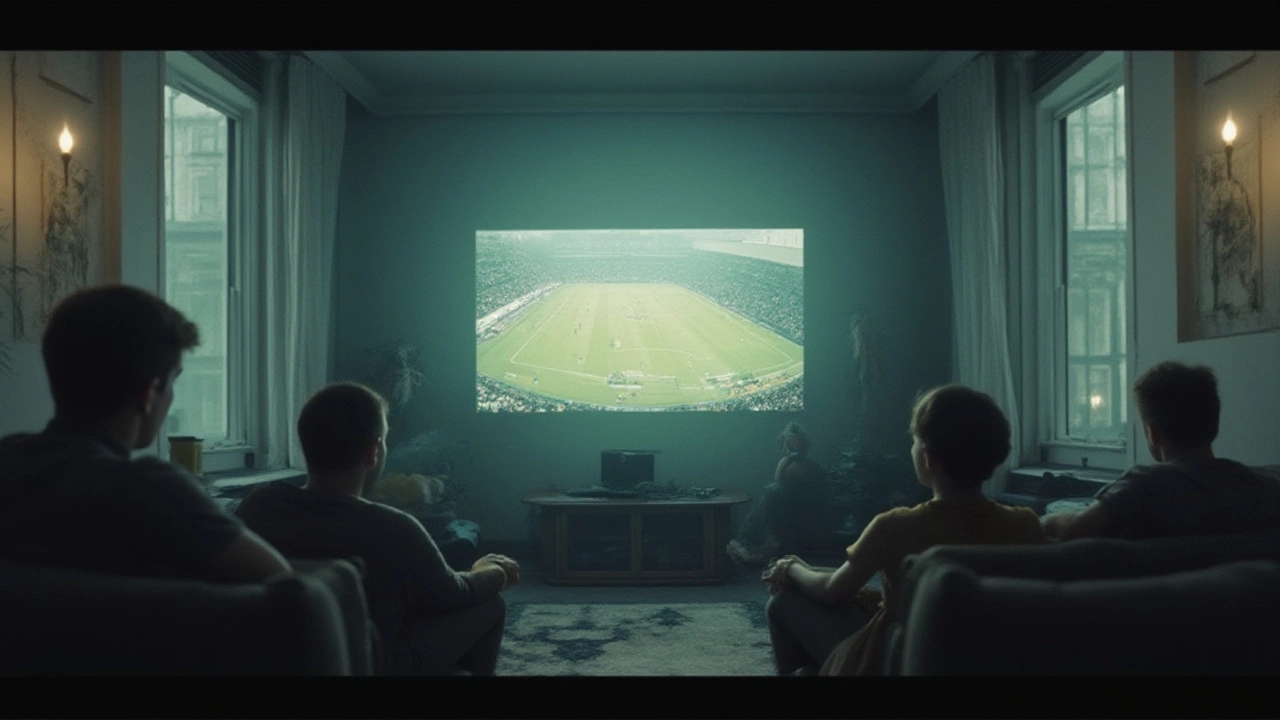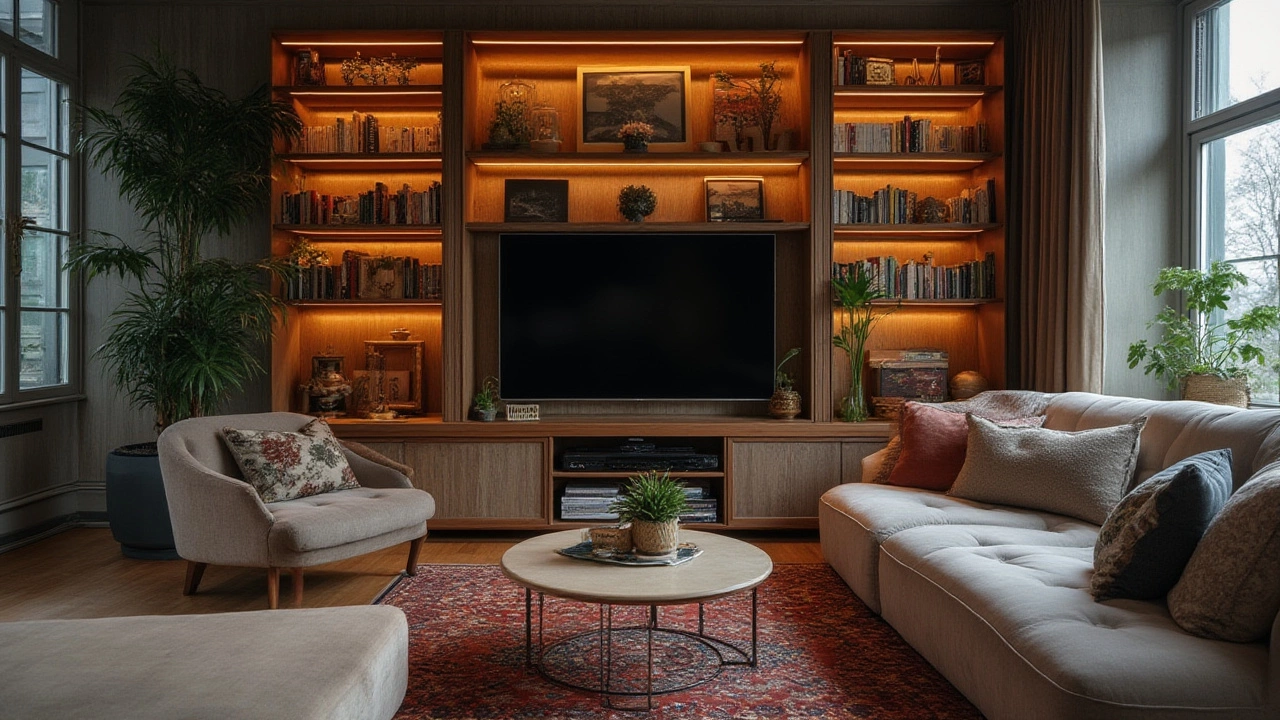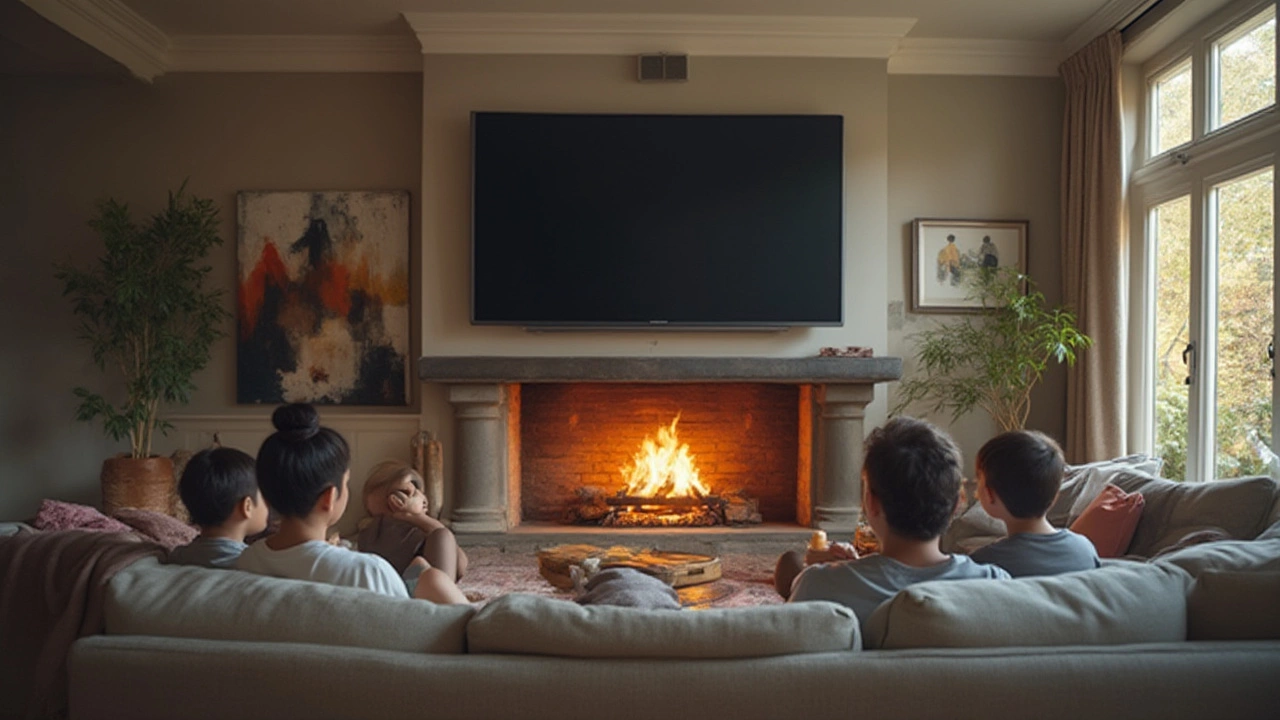Ever noticed how some folks hang their TVs so high you need a neck brace to watch the basketball game? Or you've seen those ultra-chic bathroom setups where you wonder if water and electronics are the world’s worst couple? TV placement decisions can make or break your living room and even risk your safety, not to mention the TV’s lifespan. There’s more science and practical wisdom involved than most people think. Let’s talk about what not to do if you’re hunting for that perfect TV spot. Spoiler: not every empty wall is the right wall.
Above Fireplaces: Don’t Let Looks Fool You
Mounting a TV over a fireplace might look straight out of a design magazine, but it’s honestly one of the worst places for your screen. Fireplaces generate heat, which is a sworn enemy of electronics. Most modern TVs are rated for operation below 95°F (35°C). But even when your fireplace isn't producing visible flames, it can push up the wall temperature beyond what your TV likes. The problem is, heat rises. If you’ve ever toasted marshmallows, you know just how much heat can sit above those logs. According to information shared by CNET, "Long-term exposure to heat is likely to shorten the lifespan of your television and void its warranty."
And then there’s the viewing angle. If you need to crane your head just to get a good look at your favorite movie, something's way off. Ideally, the center of your TV should be at eye level when you're seated. Put it too high, and you get neck pain faster than you think. A study from the Ergonomics Journal found that watching a screen mounted above natural sightlines increases discomfort by 78% over two hours. Most couches sit 18 inches from the floor, and the average eye level when sitting is about 42 inches. Got a fireplace? It probably puts your TV six to seven feet high—not even close to ideal.
Let’s look at some numbers for perspective:
| Issue | Details |
|---|---|
| Average Fireplace Height | 40"-52" off the floor |
| Ideal TV Center Height (Seated) | 42"-48" |
| Common Wall Temp Above Fireplace (In Use) | ~100°F/38°C or higher |
| TV Operating Temp Limit | 95°F/35°C |
And about that style factor? Even if your TV holds up, you’ll notice issues like weird glare from light fixtures and windows, especially since fireplaces usually hog the best spot in your living room. So unless you’re never using your fireplace or have expensive heat-sinking insulation, skip this spot. If you must, get a mantle shield or heat deflector. But honestly, your neck and TV will both thank you if you look elsewhere.

Bathrooms, Kitchens, and Humid Spaces: Water Is Not Your TV’s Friend
Picture this: You’re soaking in the tub, watching a movie. Instagram loves these bathroom TV setups. Reality? Not so much. Electronics and moisture are a disastrous mix. Even if you never actually splash the TV, steam from your shower can get into the vents and fry sensitive circuits. A 2023 survey by Consumer Reports found that TV failures due to moisture account for around 8% of all out-of-warranty TV repairs, with bathrooms and under-cabinet kitchen setups leading the complaints list.
And it’s not just bathrooms. Mounting a TV above the stove, near the sink, or even on a kitchen wall where steam, grease, or smoke hang around is playing with fire (no pun intended). Those little bits of oil or condensation build up over time and coat your TV’s innards, leaving it sluggish or permanently damaged. Plus, your shows won’t be much fun if you’re constantly wiping away fog, or you miss that cooking demo because there’s a glare you can’t escape.
If you absolutely, desperately want a TV in one of these spots, look for a waterproof or outdoor-rated model. But be warned: they’re often much more expensive and have chunkier frames. You’ll still need to deal with electric wiring and ventilation—plus be extra careful with power cords and outlets near water. Need proof? Here’s what an electrician once shared on a Reddit home improvement forum:
“I’ve seen people install regular TVs in bathrooms thinking it’s harmless, but the moisture basically killed it within a year. Play it safe and keep TVs out unless they’re designed for it.”
Most people overlook these less-than-obvious risks. Mold can hide behind your wall-mounted TV if the wall stays damp—bad for your health and even trickier if you ever sell the house, since mold can be a major red flag for buyers. So, set up your bubble bath playlist on waterproof speakers instead. Save yourself the repair bill and the headache.

Other Poor Choices: Sunlight, Tight Corners, and Unstable Walls
You’ve probably seen a TV stuck in a sun-drenched corner or hovering over a wobbly partition wall and wondered, “Doesn’t that seem risky?” You’re right. Direct sunlight is terrible for TV panels—they can literally fade and eventually get weird colored spots or dead pixels. Even worse, UV light breaks down the plastic bezel over years, making it brittle. Popular Science ran a test where sample TV screens faded up to 30% faster under constant window glare compared to screens out of direct light.
This brings us to glare. Mount a TV across from a window, and you’ll find that no curtain ever does the job quite right. Annoying reflections during daytime hours lead to squinting and complaints (especially if you’re dealing with a glossy screen). Modern TVs are brighter than older models, but they’re not magic—glare still kills the picture quality. Place a TV perpendicular to windows and away from harsh, direct light. Don’t have that luxury? Invest in blackout shades or anti-glare screens, though these are just workarounds, not perfect solutions.
Tight corners and odd nooks seem tempting because they’re empty. Problem is, you compromise viewing angles for everyone except maybe the person sitting right in front. And often you’ll tilt or swivel the screen to help, but then cords show—ruining your room’s vibe and possibly creating a trip hazard. If you’ve got a tiny alcove, use it for shelves or art, not your expensive TV.
Ever thought about mounting your TV on a wall that doesn’t quite feel solid? There’s a reason TV brackets always recommend finding studs. Gypsum board (or drywall) alone won’t handle the weight, especially for screens 50 inches and up. A 70-inch TV can weigh up to 75 pounds (34 kg). One wrong move and your TV ends up on the floor, or you rip out half the wall in the process. Remember: stud finders exist for a reason. Mounting into bricks or concrete works if you use proper anchors, but plaster or hollow walls are a no-go unless reinforced.
As you set up your system, use this checklist to make sure you’re mounting right:
- Check for heat sources (radiators, ovens, fireplaces) nearby
- Test for wall stability: Are there studs or anchors for your mount?
- Measure light sources through the day for avoidance of glare
- Avoid locations with high humidity or risk of spills
- Never block air vents behind or beneath the TV
- Keep cords tidy, avoid trip zones or unfriendly pet pathways
If you follow these rules and keep your TV at eye level in a well-ventilated, dry, and sturdy spot away from direct sun and everyday chaos, you’ll have a setup that’s comfy, safe, and lets your screen live its best life. Trust me, when you’ve got the right spot, kicking back for movie night feels just right. Bad mounting locations? Leave them to those Instagram showrooms—they don’t have to actually watch TV there every night.


Write a comment